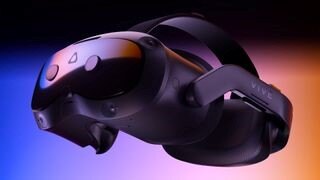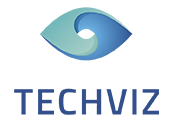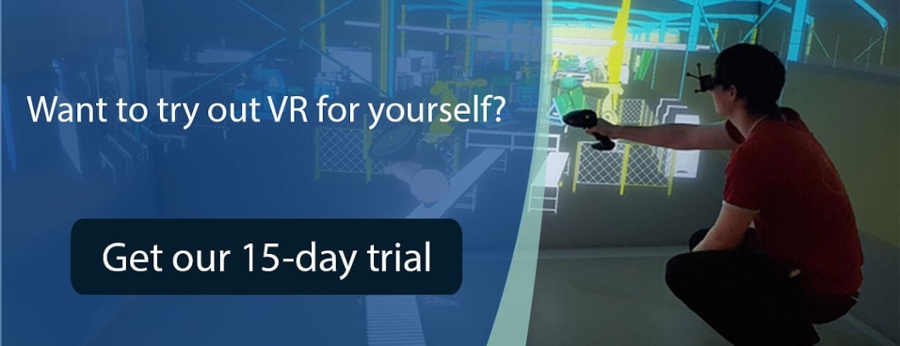HTC has just announced the imminent launch of their new headset, the Vive Focus Vision, that had been teased for a few weeks now. In this article, we analyze the specs that have communicated and their fit with the needs of our enterprise customers.

From the information published by the Taiwanese manufacturer, it looks like a kind of technical facelift of the Vive Focus 3, launched in 2021. Yet, at TechViz, we don’t necessarily see that as bad news: the Focus 3 is one of the sturdiest HMD available on the market and clearly well-adapted for professional use. Batteries can easily be swapped, contact parts are easy to clean, which is reassuring for operators of VR installations, when they have to set-up a design review with the top management.
The bulk of the changes are on the technical side and it looks very promising:
- First, the integration of HD cameras and depth captor will make possible a genuine Mixed Reality use, which is a big improvement versus current generation. This passthrough will allow a better rendering and feel of real world and avoid motion sickness.
- Then, an infrared camera has been added to improve the tracking of the user’s hands. This is a feature of the upmost importance for many of TechViz customers: when they carry-out reachability analysis in VR in real-time from their CAD application, having a performant tracking is of the essence.

We cannot wait to test the combination of the infrared camera and depth captor, as the rendering of the hands are an area where there is huge room for improvement for all headsets in current generation: tracking is often easily lost and there can be a significant offset between the actual position of the hand and how they are rendered, especially when hands are close to the headset.
![]()
On top of these two major changes, HTC has detailed other changes likely to make life easier for our enterprise customers:
- “Hot swap” of the battery, with a small additional battery that has been integrated. This way, it will be possible to change the battery without having to restart and reconnect the HMD, which always tends to happen at the worst possible moment.
- Auto-setting of the interpupillary distance, a feature that will make it easier when you have multiple users passing the headset around (e.g. TechViz team making demos during at a trade show!).
In summary, the new Vive Focus Vision seems like a very promising upgrade for our customers, who have a very demanding use of VR headsets. Displaying 3D-models from CATIA V5, Creo, Navisworks or other CAD software in Virtual Reality is a key step in their development process and they have to choose hardware they can rely on. We are looking forward to have a sample on our hands (and head) to be able to confirm how these appealing specs translate in actual use.






 Back to Blog
Back to Blog




